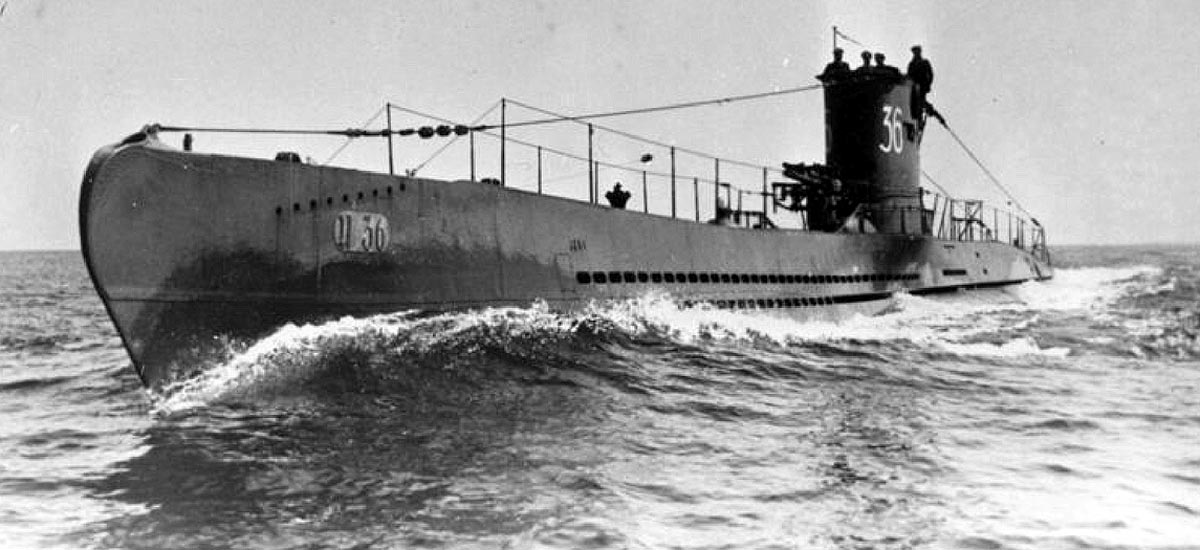
A German U-Boat World War Two
Some may recall the remarkable discovery in the spring of 1985 of the sunken World War 2 German U-Boat in the St. Croix River just behind Taylor’s Furniture. Not ringing a bell? It should-the sub was a highly sophisticated, experimental model which had it not gone down with all hands while attempting to navigate the treacherous St. Croix Narrows could well have changed the course of the war. For those who remain a bit skeptical and don’t happen to have their copy of the April 4, 1985, Advertiser close at hand we’ll jog your memory.
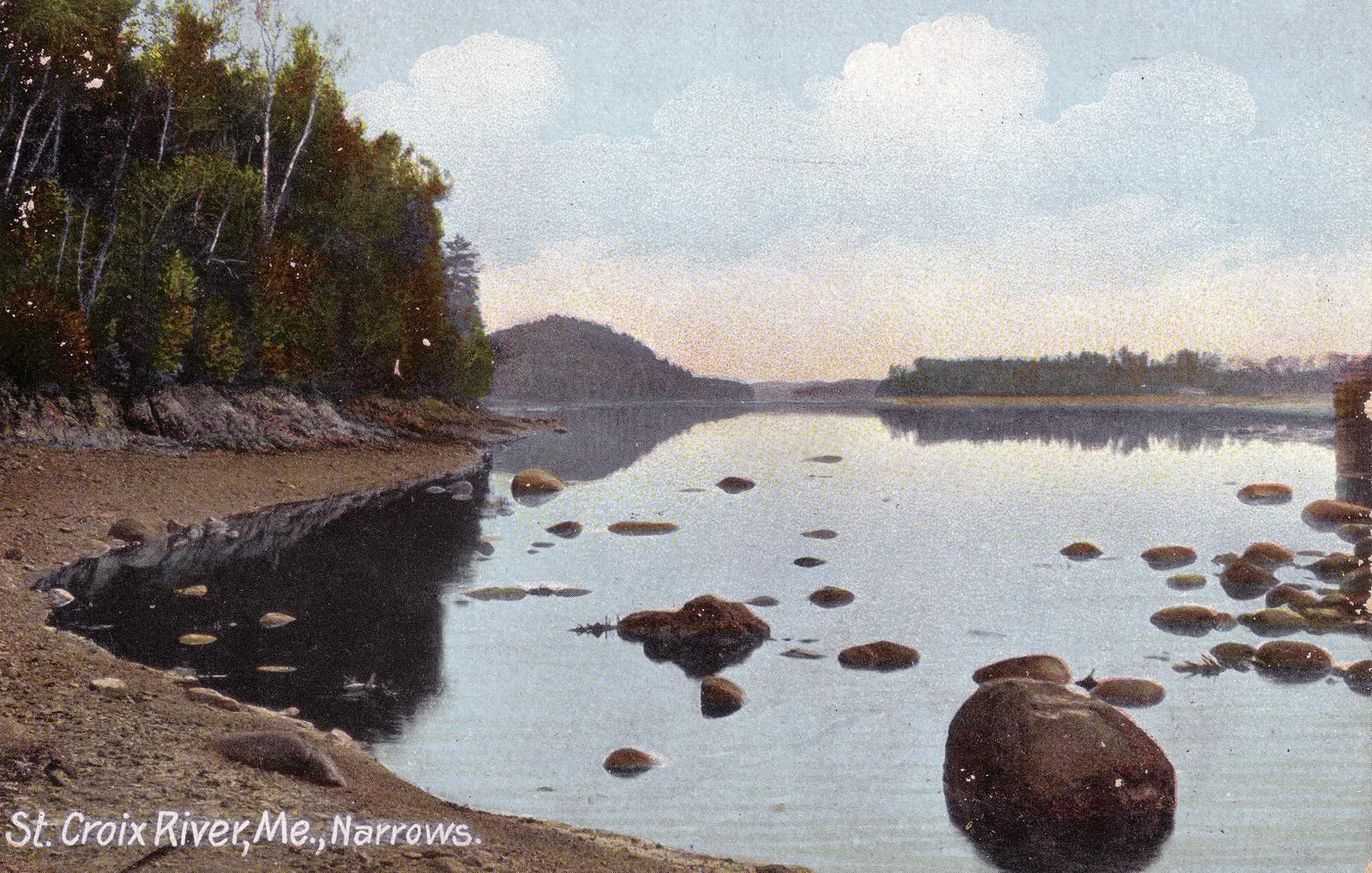
Looking upriver from below Devil’s Head the StCroix narrows to a slender, dangerous channel
Calais Advertiser-April 4, 1985
World War II Plot Unmasked
By Gib Reil
The United States and Canadian governments have tried to suppress the matter but a high-ranking Reagan aide let things out of the bag to this reporter last week. Both countries have tried to keep a lid on what I am about to reveal but here it is, exactly as told to me.
On January 20th of this year, the lobster boat Mary Celeste, captained by J.P. Jones was at anchor in the St. Croix River due to a bank of fog that had rolled in.
As darkness approached, Captain Jones decided to try and make it through the fog that was beginning to lift. As his crew moved around the deck, a large fishing net was knocked overboard and when hauled in, a portion of it became snagged on something underwater. Since low tide was rapidly approaching, Jones was most eager to sail down the river to open water. He sent a crew member into the water to see what the net was caught on.
About four feet below the surface, the diver found a large bent pipe protruding out of the river’s bed. Freeing the net, he reported his find to the captain who radioed the Coast Guard to check it out since the pipe could cause serious damage to a boat as the tide fell. The location was marked with a buoy and the Mary Celeste crept into the fog for home. The next afternoon officials from Fish and Game in Machias sent a team of divers down to investigate the river’s obstruction and to remove it as quickly as possible.
After an hour of digging around the pipe, the divers surfaced and told their superiors to contact the Federal Government as the piece of pipe was the periscope of a submarine!
During the first week of February, you may have noticed the Coast Guard ship anchored in the St. Croix, just behind Taylor’s Furniture. The ship remained for three days and made an astonishing discovery. The P. C. shaft was still attached to a submarine buried in the bed of the river. Even more interesting was the fact the submarine was a German sub of World War Two vintage.
Upon digging around the periscope, the divers had unearthed the sub’s conning tower. On the side of the tower were the still distinguishable identification marks revealing the sub’s number. “U-B Al “.
The news was rushed to Washington and from there officials in Germany were notified about the sub’s discovery. Two days later three high ranking German officials along with other men, showed up in Boston and were flown by helicopter to the Coast Guard ship still anchored over the sub.
With the officials came highly secret documents from 1945 bearing Adolf Hitler’s personal seal and handwriting. The papers were shocking to say the least.
“U-B-Al” left German waters on May 12, 1945, under secret orders to head for Canadian waters to test a new secret weapon. The last report from the sub came on May 22. lt was within a hundred miles of the Canadian coastline. Nothing was ever heard from the sub again and the German Navy took it for granted that it had been sighted and sunk by the enemy before it could carry out its mission. And what a mission it was to have been!
On board the U-Boat had been a new type of bomb that when buried in the bed of any body of water could be exploded up to thirty miles away. The effects would be devastating! The semi-atomic explosion would blow a hole so wide and so deep in the bed that the water would quickly pour through it and start an earthquake due to the sudden shift of the land. The reason Canadian waters had been selected to test this bomb was due to the fault line that runs from Washington County, Maine into southern Canada. German scientists claimed the quake would have been effective over an eighty-mile square radius. Once all this information had been revealed to the President, he authorized the secret plan to dig up the sub and locate the bomb.
On February 12 the entire length of “U-B-Al” was uncovered. The left rear of the sub had a long gash measuring ten feet. Something had cut the sub open, causing the river to rush in, trapping the crew and sinking the ship. Over the years it slowly settled deeper and deeper into the muck of the river bottom until only four feet of its periscope remained above the bottom after 40 years.
The German government was extremely helpful in supply plans of this particular sub as it had been redesigned just before leaving Germany.
Divers had not attempted to get into the sub until the ·morning of February 18 but now it was time to get in and get the bomb out…”if” the bomb was still in the ship and not buried in the river as had been planned in Germany. Suppose the sub had been sunk “after” placing the bomb? With that in mind the diving crew worked very carefully.
Opening the main hatch took close to two hours due to the rusted tight condition. Finally, the Coast Guard ship received the signal from the divers to send down the two German men. The hatch was open. Floating books, bedding and parts of skeletons swirled around the two divers. Hatchway doors were rusted shut and had to slowly be pried open. This took another five hours. At long last the torpedo chamber was reached and close examination revealed Hitler’s secret weapon was still encased in its special nine foot by four-foot steel shell.
When the shell was opened, it was found that the bomb had been primed 40 years before and could possibly go off if jarred too strongly. Another three hours ticked by as the bomb was disarmed.
The skeletal remains of the crew were removed and flown back to Germany for a proper funeral but in checking over the sub, it was discovered that the rear hatch leading out of the ship, though closed, was not locked. Since only a few skeletons were found inside the ship, it was thought that the missing bones had been washed out through the gash in the ship’s hull. Now there was the extreme possibility that some of the U Boat’s crew had escaped through the hatch and had made it to shore. Could it be possible that these sailors are living in Canada or/and the United States even today?
It had been determined a week before that to remove the sub would create too many questions from too many people in government. It was decided to dig a deep trough, place the sub into it and cover it over for a final resting place. The conning tower with its periscope was removed so there would never again be any obstruction from the river’s bed.
Next time you sail down the St. Croix, remember what rests forever beneath the quiet water. And give a thought to what might have happened “if” “U-B-Al” had completed its mission. Who knows what might have happened to this part of the world if the bomb had been detonated? The biggest mystery to me is what caused that long, deep gash in the sub’s hull? There were no rocks large enough to cause much destruction, nor was the death-dealing blow caused by an explosion. Who knows what creatures lurk beneath the waters of the Atlantic! It is better that we do not know… ever.
Naturally if the Advertiser published the article, it must be true but there were a few minor details that raised questions. One in particular was the government’s claimed ability to secretly excavate the deep burial trough in a riverbed clogged with over 100 years of sawdust from the mills upriver and what lobsterman would name a boat after the “Ghost Ship” Mary Celeste? Those who take to the sea are known for being pretty superstitious folks and the ending for the Mary Celeste was grim to say the least. The lobster boat’s captain being J.P. Jones also stirred some lingering doubt-John Paul?
Some research was required. A search of all the local and national newspapers for 1985 revealed three clues. First, the article in the Advertiser had been published in no other newspaper in the country, second the author was completely unknown, and third the author’s name “Gib Reil” is “Big Lier” spelled backwards. The article was, of course, a classic hoax probably written by Jay Hinson, the editor of the Advertiser who was both an accomplished writer and possessed of a wonderful sense of humor.
This is not to say German submarines did not visit the Bay of Fundy and Passamaquoddy Bay occasionally during both WW1 and WW2 although surely not nearly as often as reported. It is remarkable how alike are the backs of whales and the decks of a submarine although the whale does lack a conning tower. Some credible sources such as Robert Golding of Perry did see a submarine in the river, in his case while on a family picnic on the Perry shore in 1918. During World War Two, he caught a homing pigeon in the barnyard which had a band on one leg with a number on it and a roll of microfilm wrapped around the other. He reported the submarine to the coast guard, and twenty five years later turned the pigeon over to them.
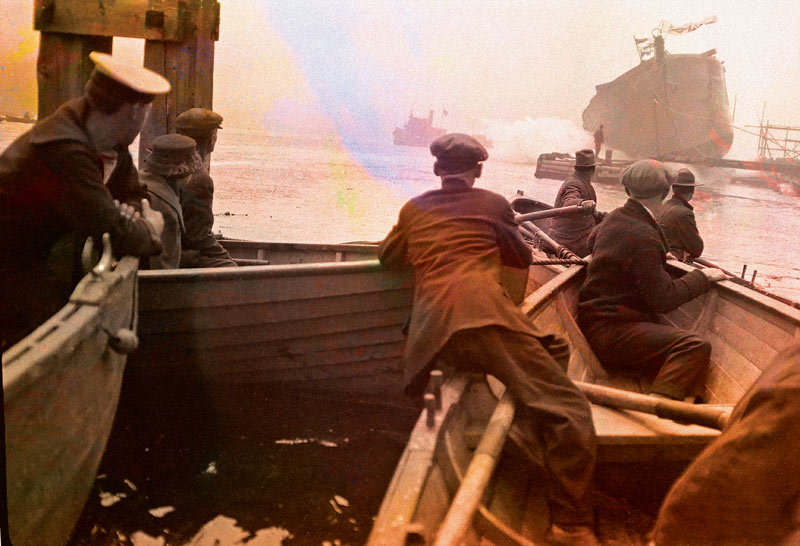
The launching of the Dornfontein at St John in July 1918. It was sunk by a German U-Boat on its maiden voyage
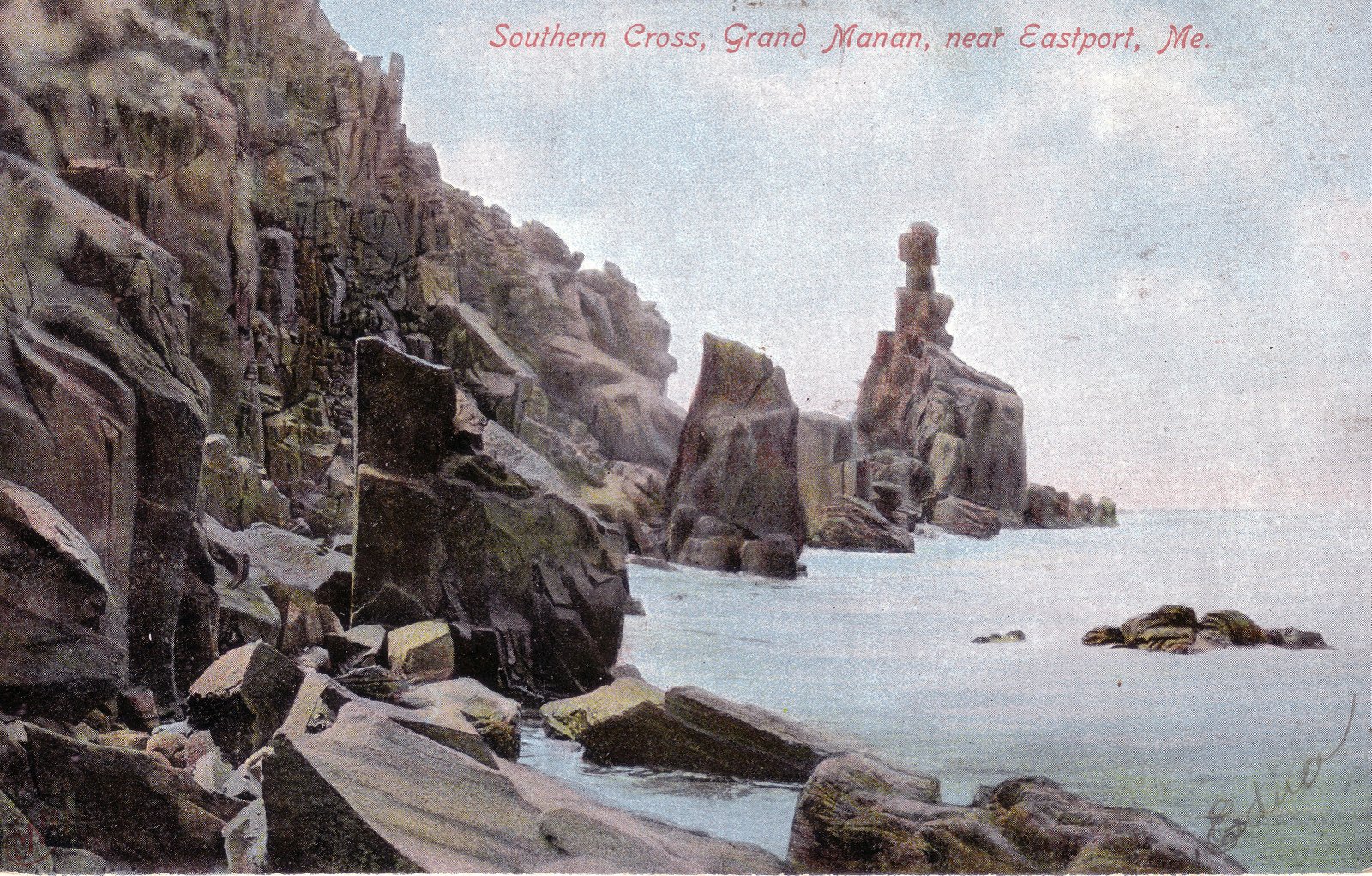
In 1918 a German submarine sunk the schooner Dornfontein off Grand Manan. According to a sailor on the Dornfontein:
“On Tuesday morning last we drifted out to sea from the port (St. John) and had a favorable wind at the start but later encountered bad weather. From Tuesday to Thursday the trip was uneventful but on Thursday morning about 11 o’clock we sighted a dark object to leeward. We had no idea of a submarine in the area and proceeded. A strange thing happened after this as a large black bird circled around the vessel and alighted on the after rail. A black bird at sea is regarded as a bad omen but we thought little of it.
As it happened the black bird was definitely a bad omen for the ‘black object’ surfaced with its guns trained on the Dornfontein. The captain of the sub advised the crew to come aboard and ‘be quick also’ an order with which the crew promptly complied. The crew was taken onto the submarine while the sub’s crew made 7 trips to the schooner to remove all the useful stores and on the last trip placed bombs and fuses in the gasoline tanks and on returning moved some distance from the Dornfontein. A loud explosion was heard, the Dornfontein lifted into the air, splinters flew, sheets of flame flared up, her masts collapsed and the vessel was but a mass of burning wreckage. After she sank, the sub’s crew gave the Dornfontein’s crew a good meal during which they were told the sub had “been patrolling off Eastport but as there was nothing stirring, they came up further until they encountered us.’ After apologizing for destroying their vessel the captain put the men in a boat ‘shook hands with us, wished us goodbye and good luck and gave us directions to shore.’”
During the Second World War there were many reports of suspicious parachutists seen floating from the sky into remote parts of Washington County and not a few reports of submarines landing saboteurs on the Downeast coast. Most were not very credible such as the WW2 stamp collector story from Under Sail Downeast:
It is reported that twenty-one years after the war, a German stamp collector found, through enquiry, that an Eastport collector had a stamp that he wanted. The Eastporter wrote to Germany and at the same time added some general information about the Quoddy area. The collector replied with thanks and said, though, that he was already familiar with the locality since he had landed during the war at Nor’West Harbour, Deer Island, from a submarine. He said he had bought a cake at Lambert’s store in Lord’s Cove, took in a movie at Mayfair Hall, and then went down the Maine coast as far as Ellsworth. He returned to Deer Island, lit a signal fire on a hill and the U-Boat returned and picked him up. Deer Islanders had reported seeing such a fire on Buck’s Mountain.
Unfortunately, Mr. Leslie had already died, too soon to enjoy the comments of his doubters.
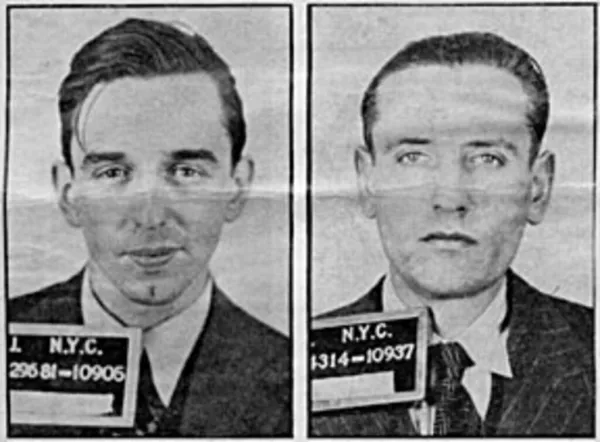
German saboteurs Gimbel and Colebaugh after arrest in New York City
The one confirmed landing of saboteurs Downeast occurred at Frenchman’s Bay in Hancock and it was one of the most celebrated tales of attempted sabotage during World War Two. In November of 1944 a rubber raft left the U-1230 which had just surfaced in Frenchman’s Bay. The raft had four passengers, two were crewmen and others two saboteurs-Erich Gimbel and William Colepaugh. The two crewmen did not intend to land but plans went awry and all four eventually found themselves onshore. The crewmen managed to get back to the sub but enjoy the distinction of being the only two uniformed Germans to reach U.S. soil during World War Two.
Gimbel and Colebaugh were armed and carried $60000 in U.S. currency and 100 diamonds to finance their operations. They came upon what is known today as the Westside Road and began walking. At 11:15 17-year-old Harvard Hodgkins was returning from a dance and observed the men. He was suspicious of their clothing and noticed footprints leading to the beach. Soon thereafter the men were seen by a local woman who was driving home from a card game. Incredibly the next vehicle to pass the men was a taxi which had just returned some soldiers to the nearby Naval base. The Germans waved him down, told him their car had broken down and asked him if he could drive them to Bangor. Confirming they had funds for the trip he took them to Bangor where they caught a train to Boston.
The next day young Hodgkins told his father, a Deputy Sheriff, of the encounter and his suspicions. His father contacted the FBI, and the Feds were soon on the trail of the Germans who were found in an apartment in New York. It was speculated their mission was to interfere with the Manhattan project. They were tried, convicted and sentenced to hang but Roosevelt’s death on April 12, 1945, led to a pause in federal executions. Their sentences were eventually commuted by Truman to life in prison, but both were released, Gimpel after 10 years and Colepaugh after 17. Colepaugh remained in the United States and died in Florida in 2005. Gimbel was deported to Germany, moved to Brazil.
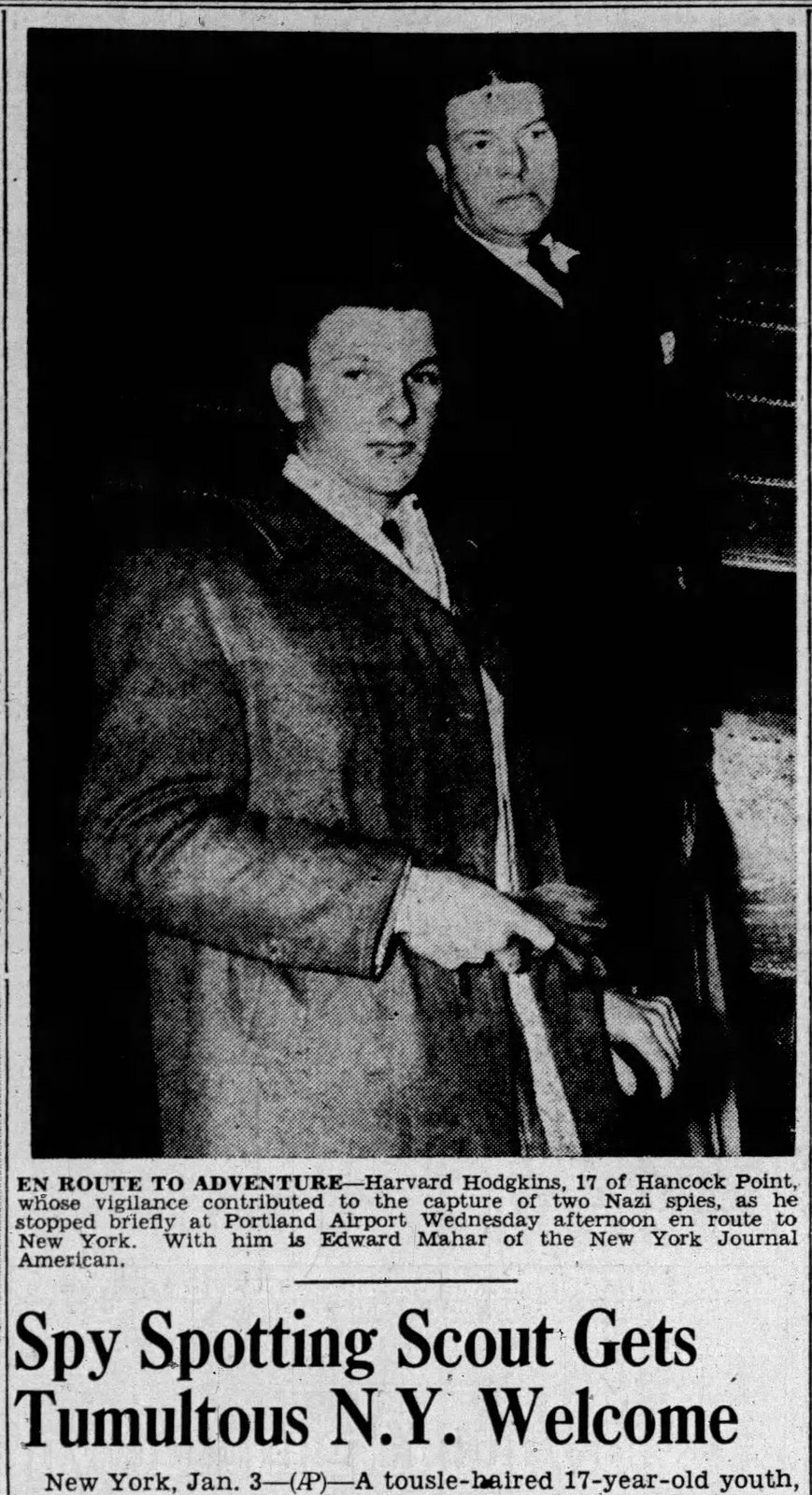
Harvard Hodgkins was excited to fly for the first time
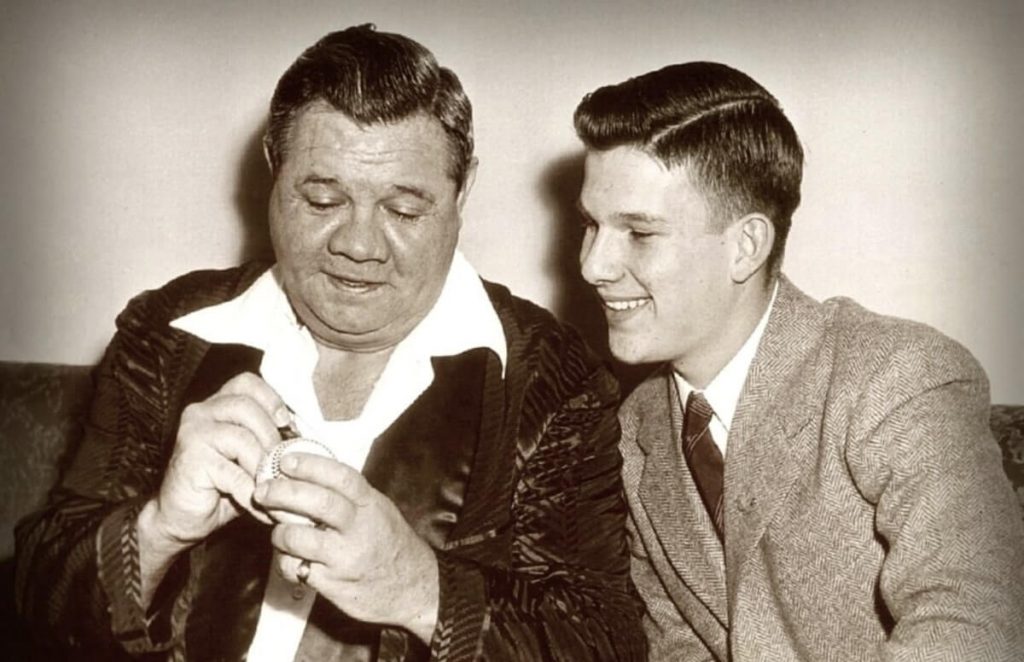
Babe Ruth autographing a baseball in New York for Harvard Hodgkins
Young Hodgkins became a national celebrity. Newspapers throughout the country extolled his perspicacity and detective skills and he was flown to New York City to be feted. He met J. Edgar Hoover, Babe Ruth, Jack Dempsey and many other celebrities and politicians.
When the war with Germany ended in 1945, Downeasters got a closer look at the German submarines. Those U-Boats near our coast surrendered to the navy. U-889, under the command of Braucker, surrendered on May 10. A few weeks later it was escorted into St. Andrews Bay by K418, HMCS Joliette, piloted by Capt. Fred Lord of Deer Island, where the public was invited to come aboard.
The Courier Deer Island correspondent reported the event:
“Deer Island – The honour of piloting the Canadian frigate HMCS Joliette, (Lieut.-Commander K.W.N. Hall, RCNVR, and the former Nazi U-Boat U889 (Lieut. E. Holmes, RCNVR) through the waters of Passamaquoddy Bay and adjacent tidal passages fell to the lot of Capt. Fred Lord of Lord’s Cove, Deer Island, who boarded the ships off Wilson’s beach and remained on the submarine until it reached St. Andrews. The Joliette and her sinister looking charge arrived from Lunenberg, N.S., Saturday morning. It was viewed with great interest by the passengers aboard the Keith Cann which was coming from Grand Manan at the time the warships were crossing the Bay only a short distance away on a course which took both the warships and the local steamer past Head Harbour Light. The visiting naval ships, however, were considerably faster than the Grand Manan steamer and they entered Quoddy River and picked up Capt. Lord and were proceeding past Cherry Island before the Keith Cann docked at the Wilson’s beach breakwater.
